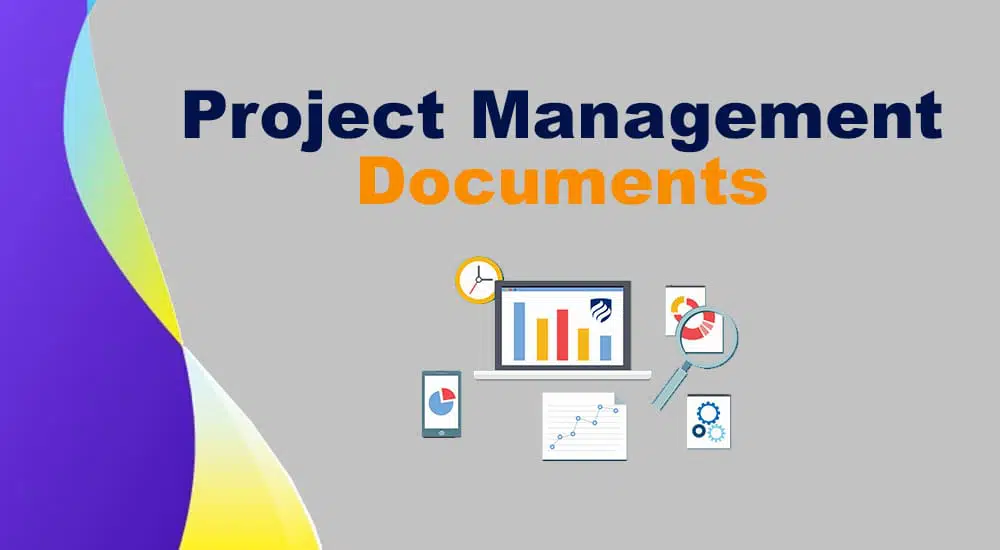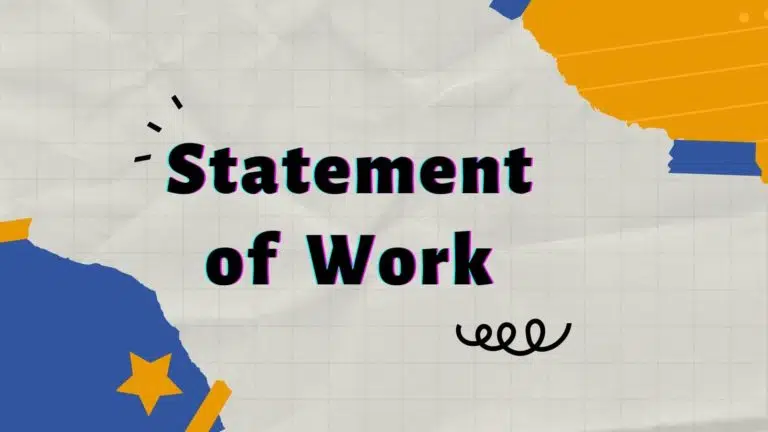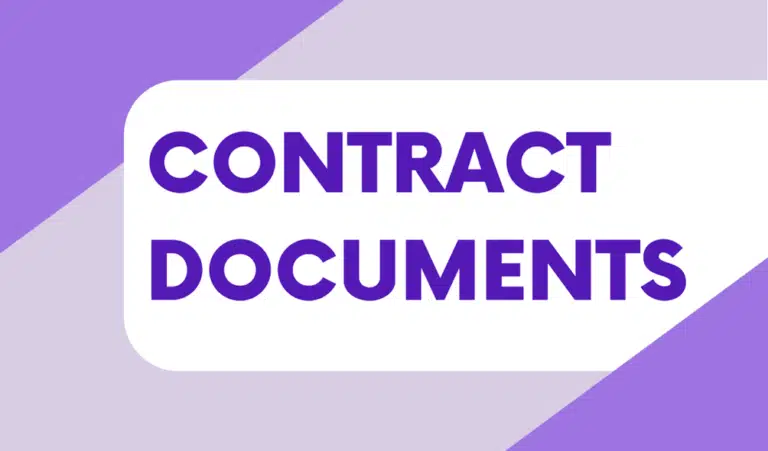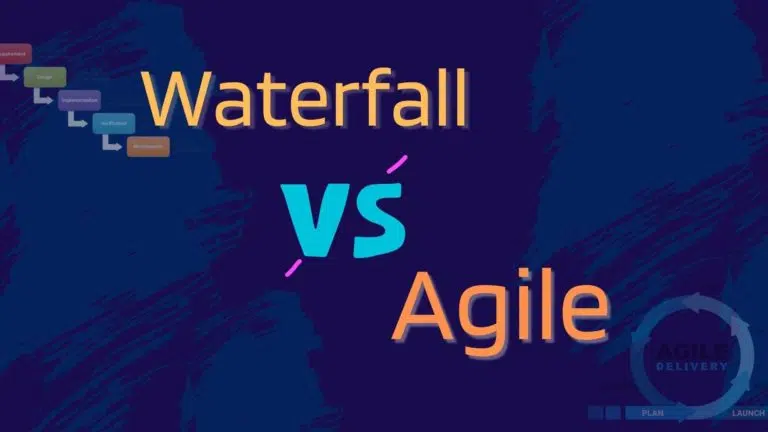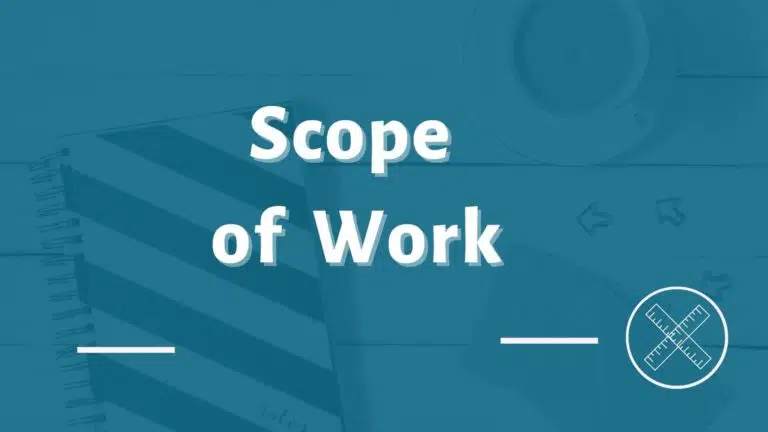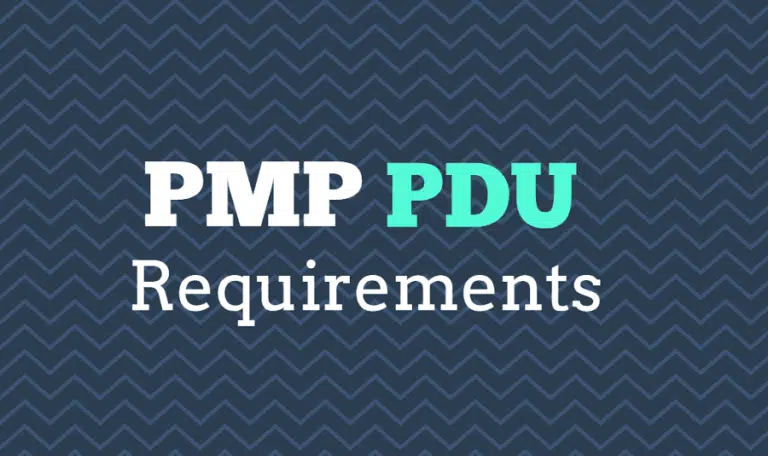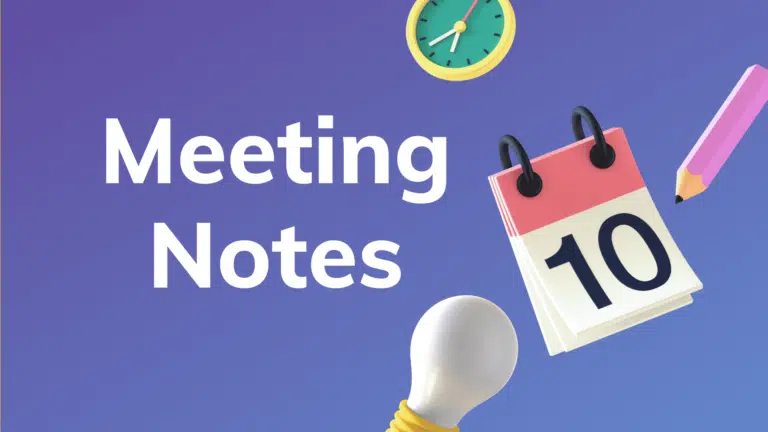Project documentation is vital for project success. A project manager deals with many documents throughout the project lifecycle. If you are involved in project management, you must understand the most important project management documents.
In today’s blog post, we will help you understand project documentation and its importance, and we will review 22 essential project management documents.
Let’s get started.
What is Project Documentation?
Project documentation includes the project management documents you create during the project lifecycle. These documents can be related to project planning, processes, procedures, logs, registers, etc. Every project management process has specific documents associated with it.
The good thing about project documentation is that you don’t have to develop it from scratch. All organizations have templates for all project management documents used. You only need to pick what you need and modify it, as per your requirements.
The project management has five phases, and now we will see what project documents are required in each phase.
Project Management Documents for Each Project Management Phase
The following is a list of project management documents for each phase of the project management lifecycle:
- Initiation Phase: This includes the feasibility study, business case, project proposal outline, project overview, project brief, project charter, and stakeholder register.
- Planning Phase: This includes the project management plans, project schedule, risk register, project budget, RACI, team charter, scope statement, statement of work, work breakdown structure, and communication management plan.
- Execution Phase: This includes the project status report, project progress report, performance reports, change request forms, checklists, and procurement documents.
- Monitoring and Controlling Phase: This includes the quality inspection reports, issue logs, risk register updates, quality metrics, and change management documents.
- Closing Phase: This includes the project closure report, final acceptance form, lessons learned documents, and client satisfaction survey form.
Next, we will review 22 vital project management documents.
22 Essential Project Documents Included in Project Documentation
A project will require hundreds of documents, but these are the 22 most important project management documents, alongside their templates.
#1. Business Case Document
A project business case document describes the need and purpose of the project. It includes a cost-benefit analysis justifying the project benefit vs the invested costs.
It assesses the benefits, costs, and risks of alternatives and justifies the preferred solution. A project business case is submitted to top management for their approval.
Economic analysis is the key component of the business case document. It shows an analysis of the return on investment (ROI), the organization’s ability to afford and complete the project, management strategy, roles, governance structure, lifecycle selection, and more.
After approving the business case, the organization launches the project.
#2. Project Proposal Outline
A project proposal outline is a structured document with an introduction, project objectives, methodology, and anticipated outcomes. It outlines the project’s background, scope, and key deliverables, thus providing a clear roadmap for implementation.
The proposal also addresses resource requirements, timelines, and potential risks, offering stakeholders a comprehensive project overview.
A well structured project proposal outline is essential for obtaining approval and securing project support.
#3. Project Brief
A project brief outline is a concise document summarizing key aspects of a project. It typically includes project objectives, scope, stakeholders, and a brief description of deliverables. This outline is a foundational document for project initiation, clearly understanding the project’s purpose and context.
It is a valuable reference for stakeholders and project team members to align expectations and kickstart project planning.
#4. Project Charter
A project charter is developed in the initiation phase and signed by the project sponsor; it authorizes the project and appoints the project manager. It provides project managers with resources to complete the project and explains the project, its objectives, and the output of the project.
A project charter includes the project’s objectives, budget, key milestones, key stakeholders, major risks, assumptions & constraints, metrics to monitor and evaluate success, and related items.
This document ensures all stakeholders agree on the project’s goals.
The project charter should answer the following questions:
- What are the project objectives?
- What are the key assumptions and constraints?
- What are the key risks?
- Who are the key stakeholders?
- Who is the project manager?
- What is the project budget and duration?
- What is the project output?
- What is the business reason for starting the project?
#5. Project Overview
A project overview outline introduces and summarizes the essential elements of a project. It typically includes project goals, scope, key stakeholders, and a brief description of the intended outcomes.
This outline serves as an initial reference for stakeholders, providing a high-level understanding of the project’s purpose and relevance. It acts as a starting point for detailed project planning and communication efforts.
#6. Team Charter
A team charter outlines the project team’s purpose, roles, and responsibilities. It includes team goals, communication protocols, and decision-making processes.
This register establishes a shared understanding among team members, fostering collaboration and alignment with project objectives. Regular reference to the team charter register helps maintain focus and cohesion within the project team.
#7. Project Management Plan
This is the main project management document (also known as the “project plan”), which consists of many subsidiary plans (e.g., scope management, quality management, communication, risk management plan, etc.).
Before executing the project, the project manager must ensure that all project management plans are ready for management, client, and/or project sponsor approval. The project management plan includes project baselines (e.g., cost, schedule, and scope) against which project progress and performance are measured.
Next, we will discuss one such project plan, i.e., the communication plan.
#8. Project Communication Plan
A project communication plan defines strategies for stakeholders’ communication needs throughout the project lifecycle. A communication plan ensures that stakeholders are always updated with the required information.
A communication-management plan can include:
- Key Stakeholders: It includes all key stakeholders, their roles, and their contact information.
- Communication Methods: It outlines the primary communication methods and channels to contact stakeholders.
- Communication Goals and Objectives: It shows the communication needs and the communication plan’s goals.
- Evaluation Measures: It determines how the communication plan’s success will be determined.
#9. Work Breakdown Structure (WBS)
The work breakdown structure is a hierarchical breakdown of project work. It divides deliverables into smaller, manageable components, assists the project manager with planning, and ensures that all project requirements are met.
A work breakdown structure (WBS) is a deliverable oriented project deconstruction. It is useful for project managers because it allows them to break down the scope and visually show all project tasks.
The work breakdown structure is an essential project planning tool. It divides a project into deliverables and then breaks them into work packages. The work packages are then further broken down into activity levels.
#10. Scope Statement
A scope statement is a concise document that outlines the project’s objectives, deliverables, constraints, and acceptance criteria. It defines the project’s boundaries, detailing what is included and excluded. This document serves as a reference for stakeholders to ensure a common understanding of the project’s purpose and boundaries, guiding decision-making throughout the project lifecycle.
A well-defined scope statement helps prevent scope creep and promotes project success by providing clarity and alignment among team members.
#11. Project Schedule
When we say project schedule, we mean schedule baseline. A schedule baseline is an approved version of the project schedule, and you measure your progress against this schedule. It defines the timeline and milestones for your project.
The project schedule defines the duration of the activity, its dependencies, and the resources required.
To develop the project schedule, you can use network diagramming techniques such as the critical path, PERT, Critical Chain Method, or the Gantt chart.
#12. Risk Register
The risk register is the key project document in the risk management plan. It includes all identified potential risks, plus their ratings and rankings, and the risk response plans. The risk register is a dynamic tool used throughout the project lifecycle to manage and monitor risks, thus helping teams proactively address challenges and enhance project resilience.
This document is updated throughout the project lifecycle for effective risk management to achieve project success with minimal hassle.
A risk register is also known as a “risk log.”
#13. Project Budget
A project budget provides details on funding requirements to complete the project. A project budget includes activity costs, contingency reserves, and management reserves.
The approved version of the project budget document is also known as the cost baseline, and the project cost performance is measured against this baseline.
#14. Statement of Work
A statement of work (SOW) document describes the requirements of a project.
A statement of work can include:
- The project goal
- The scope of the work being done
- The project’s location, duration, and any work requirements
- Expected deadlines and deliverables
- Acceptance criteria
- Any necessary hardware and software
A detailed SOW can eliminate the risk of misunderstandings or disputes between parties and reduce risk by ensuring that all stakeholders understand the work involved in the project.
#15. RACI Matrix
The RACI matrix, also known as the RACI chart, is a straightforward table or spreadsheet that lists project stakeholders and their relation to project activity. It is an example of a responsibility assignment matrix (RAM).
A RACI matrix promotes clear communication and smooth workflows among all team members.
RACI stands for Responsible, Accountable, Consulted, and Informed:
- Responsible: This is the team member responsible for the task. The team member completes the job and/or develops the deliverable. Every task should have at least one person in charge.
- Accountable: This is the task owner who approves the task completion. They ensure that the responsible team member completes the work on time. No task should have more than one accountable team member. Accountable team members are usually in leadership or management positions.
- Consulted: These are the stakeholders who have provided their input on the project requirements. Although not every task requires a consulting role, the project manager should consider all potential stakeholders’ roles while developing the RACI chart.
- Informed: These stakeholders should be informed of the project status. They must be aware of the task. They are labeled as “informed” but are not consulted during decision-making processes. Informed parties are mostly outside the project team in different departments. For example, they may include section heads of the organization’s different functional units or senior management.
Project managers create RACI charts to avoid missing important details and to ensure clear communication throughout the project.
#16. Change Request Document
A change request document is a formal document that project managers use to process change requests or deliverables.
Below are some components of a change request document:
- The name of the project, the request number, and the requestor
- A description of the change, the reason for the change, its impact on the project, and the proposed action to be taken
- The business priority of the change
- The current status of the change
#17. Project Status Report
A project status report summarizes the project’s current state by highlighting key accomplishments, challenges, and milestones. It provides stakeholders with crucial information on projects, budget adherence, and timeline issues.
The report aids communication, enabling informed decision-making and promoting transparency among team members and project stakeholders.
#18. Project Progress Report
A project progress report outlines the project’s advancements and achievements over a specified period. It includes updates on tasks completed, milestones reached, and any deviations from the project plan.
This report serves as a communication tool, offering stakeholders insights into the project’s current status and facilitating informed decision-making.
#19. Project Performance Report
A project performance report is a comprehensive document that evaluates project efficiency and effectiveness. It assesses key performance indicators (KPIs) (e.g., cost, schedule adherence, and deliverable quality). These reports provide stakeholders with insights into project success, potential risks, and areas for improvement.
Regular analysis of project performance reports will help optimize decision-making processes and enhance the likelihood of project success.
#20. Issues Log
This project management document records and tracks any issues that may arise.
Issue logs can take many forms, from a simple spreadsheet to a company’s project management software’s built-in task management features.
A project manager should use the issues log during team meetings for follow-up. The issue log serves as a reporting and communication tool.
#21. Project Closure Report
A project-closure report summarizes the completed project’s outcomes and success. It outlines the project’s achievements, lessons learned, and any remaining issues or outstanding tasks.
This report serves as a formal conclusion of the project by providing stakeholders with insights into its performance and facilitating knowledge transfer for future endeavors. The project closure report is crucial for evaluating the project’s effectiveness and ensuring a smooth transition to post-project activities.
#22. Lessons Learned
Lessons learned documents record positive and negative experiences of a project. These lessons help project managers learn from past mistakes to avoid making the same mistake in future projects.
Likewise, it also captures best practices that can be used for future projects.
Lessons learned are parts of the organizational process’s assets and represent the organization’s commitment to project management excellence and the opportunity for the project manager to learn from the actual experiences.
Lessons learned are documented throughout the project lifecycle.
What is Worth Documenting in Project Management?
Project management is about communication and keeping stakeholders satisfied. Much of this communication is in formal written form, and you should keep a record of these documents for the future.
The following are a few types of documents that are worthy of documentation:
Project Planning and Necessary Approvals
You must keep a record of all project management documents related to project planning that require approval. These documents are referred to by the project stakeholders throughout the project lifecycle and measure the project’s success.
After the project ends, these will become a part of organizational process assets and be used by project managers in future projects.
External Communications
A project manager deals with many external stakeholders during the project lifecycle for project-related issues. These may include communication with the project sponsor, clients, sub-contractors, suppliers, partners, government authorities, etc.
You must keep records of these documents as certain contracts require you to keep copies of some documents for a certain period until the guarantee period is over.
In some cases, government regulation also requires keeping copies of these project documents.
Legal Documents
A project requires many legal documents, including government authorities’ permission to run the project and use its services and resources. The procurement contract is also legal if you use a third-party service. The purchase order is also a legal document if you buy any product or commodity from a supplier.
You must keep copies of these documents until they are legally required.
What Are the Best Practices for Project Management Documentation?
The following are the best practices for robust project documentation:
- Use the project management Templates: The project will require many documents, and you must use the project management template to develop project documents effortlessly. The project management template will provide consistency throughout the organizational documentation.
- Use a Robust Document Version Control System: A robust document version control system ensures that stakeholders have access to the latest version of documents and old versions are discarded and archived.
- Document Approval Process: Establish a clear process for document approval. This should involve relevant stakeholders to validate and authorize the key project documents.
- Collaborative Tools: Utilize collaborative tools and platforms for document sharing and real-time collaboration among team members.
- Regular Updates: Keep project documentation updated with regular reviews to reflect project status, scope, and/or requirement changes.
Project Documentation Challenges and Mitigation Strategies
The key project documentation challenges and their solutions are:
- Incomplete Information: Ensure thorough communication with team members and stakeholders to gather all necessary documentation details.
- Poor Version Control: Implement robust version control systems to track document changes and avoid confusion among team members.
- Lack of Standardization: Establish document templates and guidelines to maintain consistency across different project documents.
- Inadequate Communication: Foster open communication channels to ensure that all team members understand the documentation requirements and updates.
- Insufficient Training: Provide training on documentation tools and processes to enhance team members’ proficiency and adherence to documentation standards.
- Ineffective Review Processes: Establish regular review cycles that involve relevant stakeholders to identify and rectify errors and/or discrepancies in project documentation.
Conclusion
Project management documents are an essential part of project management. They keep projects moving, keep stakeholders updated, and help project managers complete the project with minimal hassle. Using these project management documents can improve project quality.

I am Mohammad Fahad Usmani, B.E. PMP, PMI-RMP. I have been blogging on project management topics since 2011. To date, thousands of professionals have passed the PMP exam using my resources.

